Oculus Rift with Oculus Touch review: new motion controllers finally make Oculus the King of VR
Vive-style 3D controls, with easier setup, at a slightly lower price? Now we're talking…
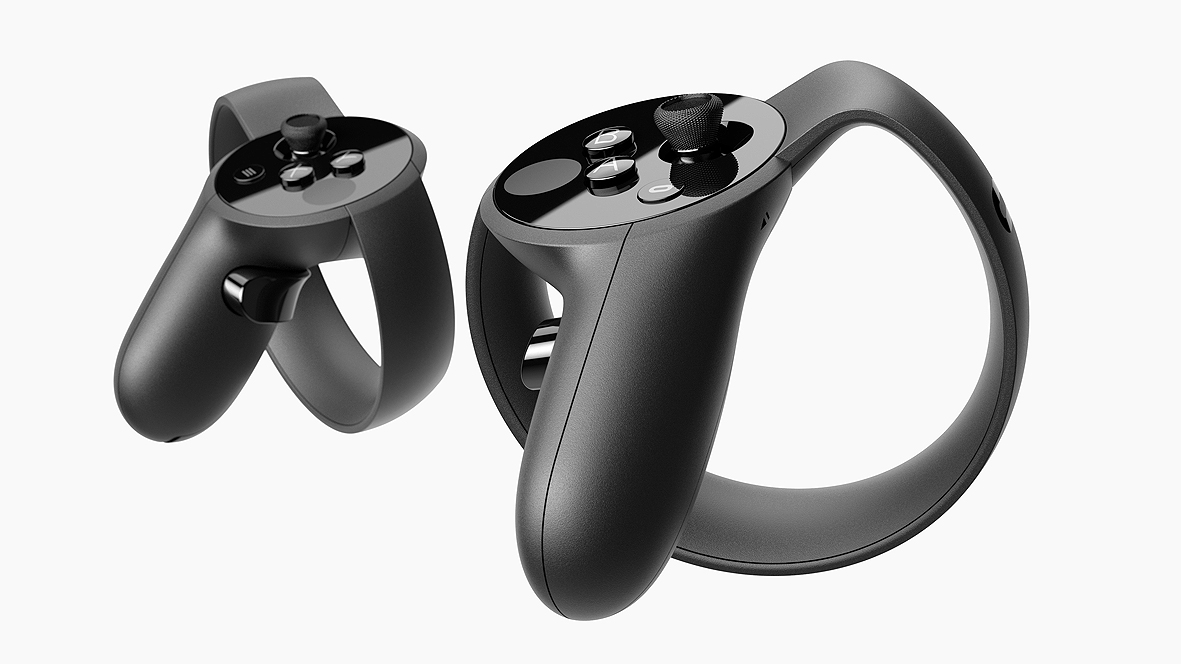
-
+
Plenty of games
-
+
Now has motion controllers
-
+
Cheaper and simpler to setup than Vive
-
-
You’ll need a powerhouse PC
-
-
Not as comfortable as Vive
-
-
Controllers arguably more complex than they need to be
Why you can trust T3

UPDATE December 5 2016: We've added a section on Oculus Touch motion controllers. We strongly recommend them if you're thinking of getting an Oculus Rift or, indeed, if you've bought one already.
Oculus should have been the Hoover of VR. The Kickstarter original that created the virtual reality market should have been the name synonymous with the tech.
But, because it took so long to get to market, it ended up just one of several options, including the HTC Vive and the phone-based Samsung Gear VR.
Sony's PlayStation VRalso hit shops before the release of the essential Oculus Touch motion controllers.
However, Oculus Rift is now the system it always should have been, with full body tracking and controllers that can be your hands, tools and weapons in the VR world.
As well as the 100 existing titles for Oculus in its original form, there are now 40 that support Touch, all easily accessible via a simple Shop interface.
Oculus Touch: the magic ingredient
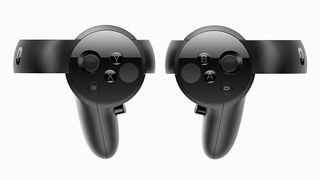
When it launched, Oculus was saddled with a Microsoft Xbox controller that was totally inadequate for VR gaming and experiences. Seriously, the Vive's Wii/PS Move-with-knobs-on motion controllers knocked it for six.
Oculus Touch rectifies that. Not only does it add motion-sensing control with more buttons than you can shake your finger at, but also a second motion-sensing camera, so Oculus Rift can now see in 3D.
This means that, just as with Vive, you can now map a play area to move around in, in games that support that.
Setup is a lot simpler than Vive, because the cameras come on little stands and don't need to be above you. We plonked them either side of the telly and with minimal fiddling or fuss, it worked just fine.
You then map the playable area by walking its perimeter whilst holding down the trigger on one of your Touch controllers.
Once mapped, you can show a "virtual fence" at the play area's borders, so you don't walk into walls or your TV. Unlike Vive, this is on all the time, rather than appearing as you move towards it.
Also unlike Vive, there is also no facility to view the room whilst wearing the headset, so for safety reasons, we felt obliged to play with the fence turned on all the time.
That minor niggle aside, adding Touch gives Oculus a massive boost.
We don't find Touch as easy to pick up and play with as Vive's controllers, because they're a slightly more awkward shape, and have more buttons, but there's really not much in it.
What remains to be seen, with time, is whether the greater sophistication of Oculus Touch's array of controls actually gets used in games and apps, or if some of the buttons and controls end up drastically underused.
For now, as well as acting as weapons, Touch makes a decent stab at giving you virtual hands.
The button under your middle finger is specifically intended to 'grip' in-app objects, and if you take your finger off the trigger button, you can see it 'pointing' in compatible apps.
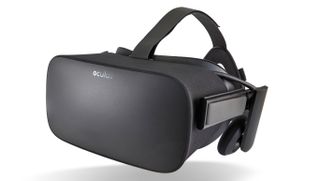
Oculus Rift: everything else
The Oculus Rift headset is sleek, with a matt and tactile black finish. That said the functional design and materials don't quite scream aspirational consumer product (although it's maybe not as dry as the almost sci-fi like Vive, with its spider-eyed arrangement of tracking sensors).
Only the Samsung Gear VR and PlayStation VR manage a level of sexy gadget appeal so far. But, once you're wearing the thing, you'll never see any of that that. There's one lead coming off the back of the visor that causes no trouble and when you're stretching the whole thing over your head it all feels robust but not cumbersome.
The included headphones look a little odd but sound great so while you can use your own it's not really worth it. The only real flaw is it's prone to letting light in around the nose. On the one hand that can really break the immersion as you catch glimpses of your knees, although it is handy for sneaking a glimpse of your watch or phone without taking the headset off (likely not an intentional features).
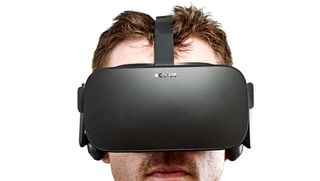
Features
One thing the Oculus needs is a lot of ports. Specifically a USB 3.0 and HDMI or Display Port for the headset.
You'll also need a USB 3.0 for the head tracking camera (below), and if you add Touch controllers, although they're wireless, you will need a second USB 3.0 for the second camera that these motion sensing devices require.
Any old USB will do for charging the bundled Xbox controller, if you prefer to use that (NB: you won't).
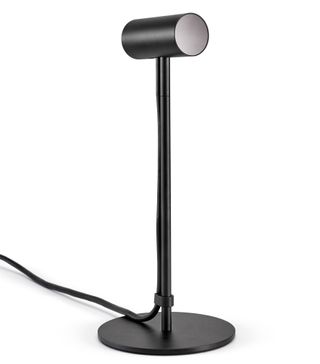
There's also this nifty little wireless remote you can hang from your wrist to navigate menus and play a few simple games.
Slightly irritatingly, it only works with the headset on, so you can't use it to navigate the setup menus that are only accessible via the standard Windows interface and a TV or monitor. Oh well.
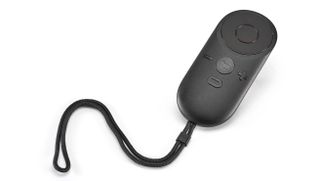
The headset itself packs in a mic, a set of decent headphones and two 1080 x 1200 AMOLED screens with a refresh rate of 90Hz. That's an important part of minimising motion sickness and, combined with the resolution, is the main reason behind the high specs need to run everything.
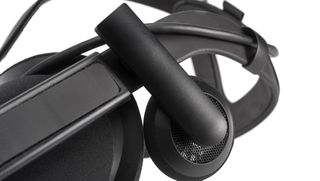
While all the basics were here in terms of headset, camera and so on, the Oculus initially missed a huge trick by not shipping with motion controllers.
Using a more traditional controller limited the experience hugely, giving you no tactile presence in the world, meaning that what you played often felt like 'normal' games with a VR camera.
That, however, is no longer the case, and we heartily recommend you spend the extra 190 quid required to add a brace of Oculus Touch controllers to your setup.
Performance
As previously mentioned you'll need a fairly decent PC to run the Oculus to its best potential and that's probably the single biggest thing to consider here. Even the recommended minimum Nvidia GTX 970 or AMD 290 graphic cards (and the rig need to run them) can struggle a little with some of the more intensive games.
That's not likely to improve as games get more ambitious so use a Nvidia GTX 980/1080 or Radeon R9 390 for future proofing. An i7 processor is also advisable.
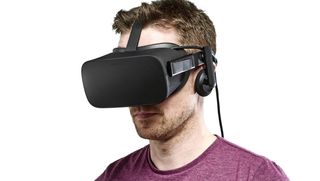
Assuming that you've got the power run it, then it all comes down to what goes into your eyes. Those 1080p screens create a reasonably sharp picture although not without some pixelation due to the lens magnification.
There can also be a very slight blurring chromatic aberration effect and the far edges of view can stand out a little no matter how well you align the lense. These shortcomings are quite dependent on software art styles and effects though, which mask the issues, making them noticeable to different degrees depending on what you're playing.
The effect is a little like looking through a snorkel mask into the world, although that field of view is easily forgotten in use. Personally we prefer the Vive's image quality but there's very little in it.
Head tracking is instant and responsive but the visual field of the camera does limit how far you can move about.
Add Touch controllers and the second camera that comes with them, however, and you get something much more like the Vive, with full 3D body tracking and the ability to use your entire room as a playable space.
Unlike Vive, the cameras don't need to be above you, which makes setup vastly simpler.
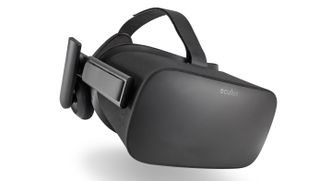
Usability
While all that talk of plugs might sound like a faff that's basically the start and end of the physical set up and the software does the rest.
Without anything like the Vive's sensors to worry about, the time from opening the box to playing something is short. There's also a simple diagnostic to get a perfect lens alignment, crucial to for the best image quality.
Oculus Home, a sort of virtual lodge that houses your software and films, as well as managing downloads and updates, is simple to use and welcoming.
The light headset won't physically cause problems for most people and the camera detects when you put on or take it off so there's no confusion during transitions. It doesn't play well with glasses though, pressing on frames.
So if you're a spectacle wearer you're more realistically limited to 45 minutes to an hour depending on your pain threshold.
The real functional issue is motion sickness, which can affect people to different degrees, or not at all.
Oculus gives all its games a rating of Comfortable, Moderate or Intense to help judge what you're going to get, and most find their tolerance improves over time.
This is a difficult topic to write about as we suffer zero ill effects from using VR headsets, so have no personal experience to draw on.
A handful of people will be totally unable to use Oculus, or any of its rivals. If you suffer from motion sickness when travelling, that could be you, so try before you buy.
For most users, if you take it carefully at first – headaches and the urge to hurl can come on fast – you should find your tolerance grows with experience.
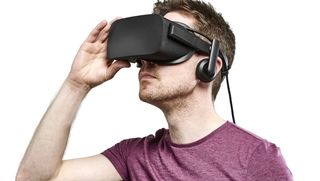
Verdict
Now it has the Touch controllers, Oculus becomes our top recommendation for PC-based VR.
The experience of using it is a literal eye opener, from games to 360 movies. The software is friendly to use and the range of apps is growing.
Vive remains an excellent product, with slightly better controllers and more overall polish in terms of things like setting up and using your virtual playing space.
However, the much greater ease of setup and slightly lower cost (£738 on rrp for Oculus Rift and Oculus Touch), to Vive's £769 at time of writing, though we expect a price cut from HTC very soon) make Oculus the best option.
Don't forget to check out 9 things you should do with a virtual reality headset before all your friends
Sign up to the T3 newsletter for smarter living straight to your inbox
Get all the latest news, reviews, deals and buying guides on gorgeous tech, home and active products from the T3 experts
Duncan is the former lifestyle editor of T3 and has been writing about tech for almost 15 years. He has covered everything from smartphones to headphones, TV to AC and air fryers to the movies of James Bond and obscure anime. His current brief is everything to do with the home and kitchen, which is good because he is an excellent cook, if he says so himself. He also covers cycling and ebikes – like over-using italics, this is another passion of his. In his long and varied lifestyle-tech career he is one of the few people to have been a fitness editor despite being unfit and a cars editor for not one but two websites, despite being unable to drive. He also has about 400 vacuum cleaners, and is possibly the UK's leading expert on cordless vacuum cleaners, despite being decidedly messy. A cricket fan for over 30 years, he also recently become T3's cricket editor, writing about how to stream obscure T20 tournaments, and turning out some typically no-nonsense opinions on the world's top teams and players.
Before T3, Duncan was a music and film reviewer, worked for a magazine about gambling that employed a surprisingly large number of convicted criminals, and then a magazine called Bizarre that was essentially like a cross between Reddit and DeviantArt, before the invention of the internet. There was also a lengthy period where he essentially wrote all of T3 magazine every month for about 3 years.
A broadcaster, raconteur and public speaker, Duncan used to be on telly loads, but an unfortunate incident put a stop to that, so he now largely contents himself with telling people, "I used to be on the TV, you know."
-
 This no-plank, three-move bodyweight workout builds serious core strength and stability
This no-plank, three-move bodyweight workout builds serious core strength and stabilityA fitness expert says these exercises build core strength like a gymnast – impressive!
By Bryony Firth-Bernard Published
-
 Your robot vacuum is finally compatible with Apple Home – if you have these models
Your robot vacuum is finally compatible with Apple Home – if you have these modelsApple’s latest software means you can now add your robot vacuum to HomeKit
By Bethan Girdler-Maslen Published
-
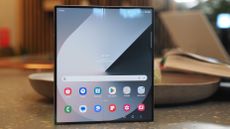 Samsung Galaxy handsets could get a massive free software upgrade as soon as this summer
Samsung Galaxy handsets could get a massive free software upgrade as soon as this summerThat's way sooner than expected
By Sam Cross Published
